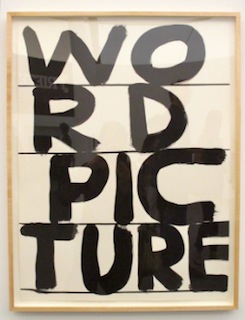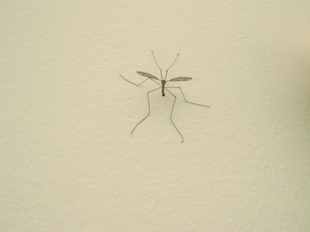Editor’s note: Contributor Luke Turner tells us about the Frieze art fair through the eyes of an art worker and writer. Here’s Turner’s list of five things he found memorable, as they relate to the ecology of last weekend’s island fair.
1. Art Fair Begins with a Bang!
During the first day of installation, I heard a single gunshot from outside the tent. Ten minutes passed and then I heard a second shot. The gunfire continued through the afternoon. At 5pm, I walked outside to investigate the source of the sounds. I found that the gun was fired to signal the start of races at the day’s track and field event held in the adjacent stadium.
2. Writing the Art Fair
Writing proliferated the fair. Language founds its way into the tent as a panel topic, on the surfaces of many art works, and stuffed into official tote bags in the form of May 2013 Frieze magazine issues.
 |
 |
Saturday, 12pm – Readings: Art in Literature
Rachel Kushner (novelist and critic, New York)
Ben Marcus (novelist, New York)
Chair: Katie Kitamura (novelist and critic, New York)
From Don DeLillo’s Point Omega to Michel Houellebecq’s The Map and the Territory, recent fiction has seen several prominent encounters with contemporary art. What are the limits of writing about images? And what difficulties are there with depicting the art world in fiction? Two readings are followed by discussion.
“These exhibits did not end, which makes it awkward to comment on them now. One must believe that nothing of interest will ever happen again in order to declare anything of substance now. The trick behind work like this is how foolish it makes you feel for trying to observe anything at all about it.” Ben Marcus, excerpt from Notes from the Hospital. Frieze Projects commission, 2013.
 |
 |
The May issue of Frieze Magazine circulated the fair. On page 39, Charlie Fox celebrates Oulipo and the re-release of Raymond Queneau’s 1947 book, Exercises in Style. Exercises in Style contains a short narrative that describes a banal encounter on a bus and then a chance meeting later in the day. The events are repeated in 99 stylistic variations.
I wrote a 100th variation in International Art English as my tribute to the famous text:
The primary event establishes a dialectic in the nomadic public space of the M35 bus that will transcend temporal specificity to resurface in a VIP lounge at Frieze Art Fair on Randall’s Island. The becoming of a localized biopolitical antagonism is activated when an abject consumer of the culture industry displaces (with his shoulder) the radically subversive artist whose practice explores the fertile intersection of social cartography and relational aesthetics. The site specificity of artist’s class signifier, and sly reference to Magritte, is subtly altered to produce a new aesthetic value that expands the field of men’s haberdashery. The established tension between social mores and the precariousness of the object is then brilliantly resolved by the artist gesture, which deftly refutes passivity and ambivalence while simultaneously enacting the performative aspect of its negations.
Two hours later, in the discursive space of Deutsche Bank lounge, the emancipated spectator’s gaze observes the artist receive a critique on the formal properties of his textile piece, a work that challenges foundational assumptions surrounding the functionality of art.
3. Installation Aesthetics
 |
 |
There are fleeting moments during the set-up of an art fair when the behind-the-scenes aesthetic exceeds that of the official presentation. A seemingly arbitrary arrangement of crates can be more elegant than the installation of the gaudy and bombastic works that they contain. Richard Artschwager comes to mind as the artist who most fully realized this phenomenon through his fabrication of crate sculptures. Often I notice that the interaction of the art laborer(s) with the art object produces a more complex visual experience than the formal qualities of the work are capable of revealing from a static state on the wall.
4. The Palestinian Museum of Natural History and Humankind
 |
 |
Wandering the advance ruins of the fair I unexpectedly encounter a “page” from the Geology and Paleontology section of the newsletter for Khalil Rabah’s contingent museum. At this stage of set-up the floor is littered with debris, booths are half-installed and some entrances are taped off. The transitional surroundings are appropriate to Rabah’s project, as his museum finds temporary form under the roof of art galleries and biennials around the world, only to dissolve and reconfigure itself at a later time. The unfinished condition of the exhibition space provides a specific context that informs my viewing of the work.
My mind does a word substitution exercise, “museum” for “piece”, with Lawrence Weiner’s Statement of Intent (1968) to produce “1. The artist may construct the museum, 2. The museum may be fabricated (a fabrication?) 3. The museum need not be built”.
I can appreciate the rarity of this brief interval in which a conceptual project gains meaning in the unlikely setting of a major global art fair. Khalil Rabah’s museum is deeply ecological, not only with regard to his the areas of specialization, but for the fact that it integrates Palestine into a larger psycho-geographical system that connects beyond repressive boundaries.
5. Island Ecology
 |
 |
Large crane flies inhabited the tent and selected lightly colored monochrome canvases and blank walls as preferred resting environments. The crane flies seemed to avoid artworks with mirrored, acrylic, or polished surfaces. The insect’s common name of “mosquito hawk” is a misnomer, as it does not actually hunt bloodsuckers.Heavy rain showers and thunderstorms were intermittent throughout the week. The island experienced significant erosion at the shore.
Writing and Photography by Luke Turner
Images of David Shrigley’s art appear courtesy of Anton Kern Gallery
Image of Anish Kapoor’s art appears courtesy of Lisson Gallery
Image of Khalil Rabah’s art appears courtesy of Sfeir – Semler Gallery


{ 1 comment }
Best piece on Frieze (or fairs in general) I’ve read yet. No hand-wringing necessary.
Comments on this entry are closed.